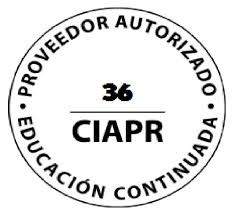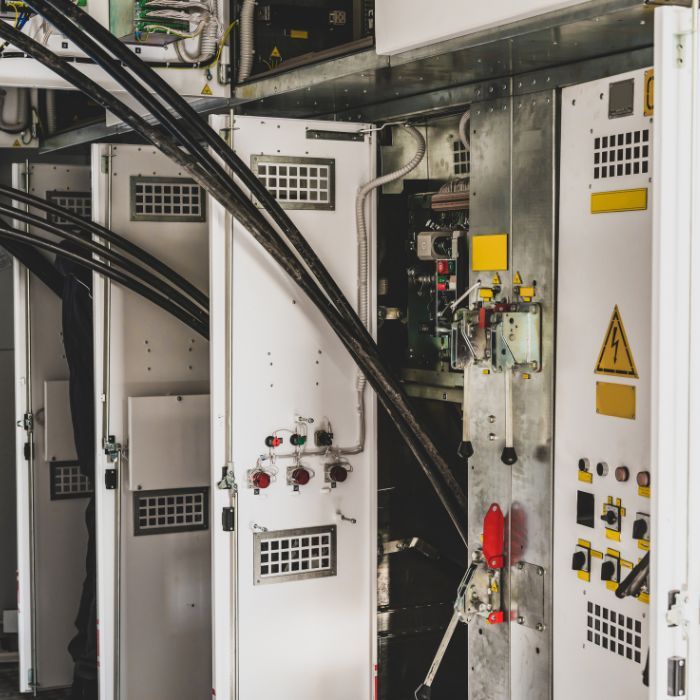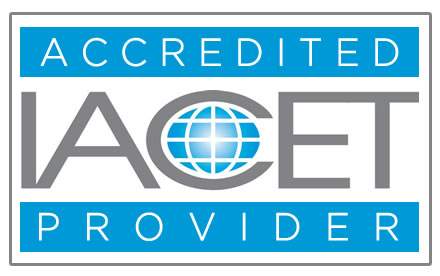6T- Key Aspects of High Voltage Industrial Network Design
Key Aspects of High Voltage Industrial Network Design
In “Key Aspects of High Voltage Industrial Network Design” course, you'll learn...
- -Needs and main constraints to be met
- -Constraints linked to the industrial process
- -Constraints linked to the electrical process
- -Constraints imposed by the utility electrical power distribution network
- -Main rules of industrial network design
- -Reactive power compensation
- -Backup and replacement sources
- -Autonomous electrical energy production
- -Choice of the earthing system
- -Insulation coordination analysis
- -Protection system definition
- -Choice of motor starting method
- -Network dynamic stability
- -Choice of optimal network structure and operation
- -Standard network structures
Overview Faced with increasingly furious competition, manufacturers need to enforce highly rigorous management and their manufacturing facilities need to be highly available. Electrical networks provide the energy needed to operate the production facilities. The provision of an uninterrupted power supply to loads is strived for from the start of the network design, especially during preliminary design of the single line diagram. Reductions in electrical installation and operating costs, together with reliable uninterrupted operation, are key profitability conditions. This technical and economic optimization asks for comprehensive preliminary assessment that includes:
-Specific requirements and constraints related to the industry type,
-Integration of the limits and constraints of the public distribution network,
-Standards and local regulations,
-Particularities of the operating staff, facilities manager and maintenance staff.
The scope of this course is limited to the assessment involved in the design of High Voltage (HV) high power industrial networks which have the following main characteristics:
-Total capacity in the 10 MVA range,
-Autonomous electrical energy generation,
-Power supplied by a national transmission or distribution network,
-Private Medium Voltage (MV) electrical distribution
This course is suitable for electrical engineers with a desire to understand the fundamentals of designing high voltage industrial network electrical systems. Course includes details about various system constraints, reactive power compensation, autonomous power production, choice of the grounding system, insulation coordination analysis etc. Upon successful completion engineers will be able to understand and consider important aspects when designing high voltage industrial networks.
Key Aspects of High Voltage Industrial Network Design
In “Key Aspects of High Voltage Industrial Network Design” course, you'll learn...
- -Needs and main constraints to be met
- -Constraints linked to the industrial process
- -Constraints linked to the electrical process
- -Constraints imposed by the utility electrical power distribution network
- -Main rules of industrial network design
- -Reactive power compensation
- -Backup and replacement sources
- -Autonomous electrical energy production
- -Choice of the earthing system
- -Insulation coordination analysis
- -Protection system definition
- -Choice of motor starting method
- -Network dynamic stability
- -Choice of optimal network structure and operation
- -Standard network structures
Overview Faced with increasingly furious competition, manufacturers need to enforce highly rigorous management and their manufacturing facilities need to be highly available. Electrical networks provide the energy needed to operate the production facilities. The provision of an uninterrupted power supply to loads is strived for from the start of the network design, especially during preliminary design of the single line diagram. Reductions in electrical installation and operating costs, together with reliable uninterrupted operation, are key profitability conditions. This technical and economic optimization asks for comprehensive preliminary assessment that includes:
-Specific requirements and constraints related to the industry type,
-Integration of the limits and constraints of the public distribution network,
-Standards and local regulations,
-Particularities of the operating staff, facilities manager and maintenance staff.
The scope of this course is limited to the assessment involved in the design of High Voltage (HV) high power industrial networks which have the following main characteristics:
-Total capacity in the 10 MVA range,
-Autonomous electrical energy generation,
-Power supplied by a national transmission or distribution network,
-Private Medium Voltage (MV) electrical distribution
This course is suitable for electrical engineers with a desire to understand the fundamentals of designing high voltage industrial network electrical systems. Course includes details about various system constraints, reactive power compensation, autonomous power production, choice of the grounding system, insulation coordination analysis etc. Upon successful completion engineers will be able to understand and consider important aspects when designing high voltage industrial networks.
| Learning Objectives | This course teaches the following specific knowledge and skills:
|
|---|---|
| Contact Hours | 6 Horas |
| CIAPR courses | CURSO TECHNICO |
| Instructor | Velimir |
| Devices | Desktop, Tablet, Mobile |
| Language | English |

IACET ACCREDITED PROVIDER
|
Self Learning Solutions LLC is a company with more than 14 years of experience in this market. At Self Learning Solutions we are proud to have obtained the IACET accreditation for our organization, along with the approvals necessary to market our products throughout the United States. Self Learning Solutions is accredited by the International Association for Continuing Education and Training (IACET). Self Learning Solutions complies with the ANSI / IACET standard, which is recognized internationally as a standard of excellence in instructional practices. As a result of this accreditation, Self Learning Solutions is accredited to issue the CEU IACET. |
SLSTECH System Requirements
To run our system effectively you should, as a minimum, use the system components listed on this page. If you do not, the system may still work but some functionality may be lost. Workplace IT environments' internal configurations can also restrict the functionality of our system. Access to content may be affected, as may the possibility of uploading files. File size limitations may also apply. Workplaces may also have older versions of software, and our system may not perform well with these.
Operating system
-
Recommended: Windows 7, 10, Mac OSX Sierra, iPad IOS10
Internet speed
-
Use a broadband connection (256 Kbit/sec or faster—this will ensure that you can view videos and online presentations) through USB wireless modem, ADSL, T1/T2, fibre optic or cable.
-
Dial-up access will be significantly slower, and we do not recommend it for using our system.
Internet browsers
Compatible browsers include:
-
Google Chrome 32 bit version 50 or later (recommended for optimal compatibility, this has been thoroughly tested on Windows)
Safari 10 or later (recommended for optimal compatibility, this has been thoroughly tested on Mac)
Note that add-ons and toolbars can affect any browser's performance.
-
MS Internet Explorer is not recommended
Settings
We recommend that the following be enabled:
-
Cookies
-
Pop-ups (in both Internet browser and security software)
-
Javascript
-
We recommend that you use the latest version of Adobe Flash Player.
Software
-
We recommend that you use the latest version of Adobe Acrobat Reader.
-
To view all the resources uploaded to Hazmat Authority, you will probably need to have Microsoft Office (Word, Excel, PowerPoint) or an equivalent (e.g. Open Office, Viewer) installed.
Security
With all firewalls, ensure that you enable uploading of files.




Validate your login
Sign In
Create New Account